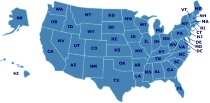Literature Based Curricula
All learning does not need to come through a textbook. In fact, using the world of books, especially "living books," will excite interest in your childen, will bring history alive, and can awaken them to new perspectives and ways of learning.
Resources
Total Language Plus
Total Language Plus is an innovative curriculum focused on teaching thinking and communication skills using literature as a base. The authors believe an integrated system is more efficient than a fragmented approach, discovery style learning is the most effective and learning should be enjoyable. The "discover, do, drill" method is employed throughout the TLP program with activities focusing on thinking skills. These comprehensive novel studies cover spelling, grammar, punctuation, vocabulary, analytical and critical thinking, comprehension, writing, listening, and field trips and projects.
A History of Science
A History of Science is not a textbook, but is a guide to help parents and children study science through literature. It is intended for children in elementary grades.
Beautiful Feet Books
Beautiful Feet Books publishes Rea Berg's "History Through Literature" study guides. They offer fine children's literature, including the D'Aulaire biographies and Genevieve Foster's "World" titles. This is a great resource for anyone wishing to utilize an approach that studies history through literature.
Five in a Row
Five in a Row provides a step-by-step, instructional guide using outstanding children's literature for children ages 4-8. Unit studies are built around each chosen book. There is a series for preschoolers called "Before Five in a Row," along with other volumes for older children.
Featured Resources
As an Amazon Associate, we earn from qualifying purchases. We get commissions for purchases made through links on this site.
Tomorrows Child
Tomorrow's Child magazine offers insights and information that helps parents to feel confident that Montessori will prepare their children for the real world. It will help you understand and appreciate Montessori and apply it in your home.
Pocketful of Pinecones: Nature Study With the Gentle Art of Learning : A Story for Mother Culture
Karen Andreola, renowned interpreter of the Charlotte Mason method of education, has written a unique sort of book in the homeschool world. Pocketful of Pinecones is a teacher s guide the nature study cleverly disguised as a heartwarming story written in the form of a mother s diary. Woven into the story are: More than 100 examples of what to look for on a nature walk, Latin names for the living things to observed by the characters, study questions, nature poems and verses. Other features includ...
Idea Book For Cuisenaire Rods At The Primary Level
Grades K-4. Each 120 page book contains worksheets and has selected activities that cover the major math standards. Each page outlines the grade level, materials needed, settings, learning experiences, and are based on NCTM Standards.
The Well-Trained Mind: A Guide to Classical Education at Home
This book will instruct you, step by step, on how to give your child an academically rigorous, comprehensive education from preschool through high school. Two veteran home educators outline the classical pattern of education—the trivium—which organizes learning around the maturing capacity of the child's mind: the elementary school "grammar stage," the middle school "logic stage," and the high school "rhetoric stage." Using the trivium as your model, you'll be able to instruct your child in all ...
Drawn Into the Heart of Reading
Drawn Into the Heart of Reading was developed for use with students of multiple ages at the same time, perfect for the homeschooling family. It is designed for use as an entire reading program or as a supplement to an existing program for students in grades 2-8.




